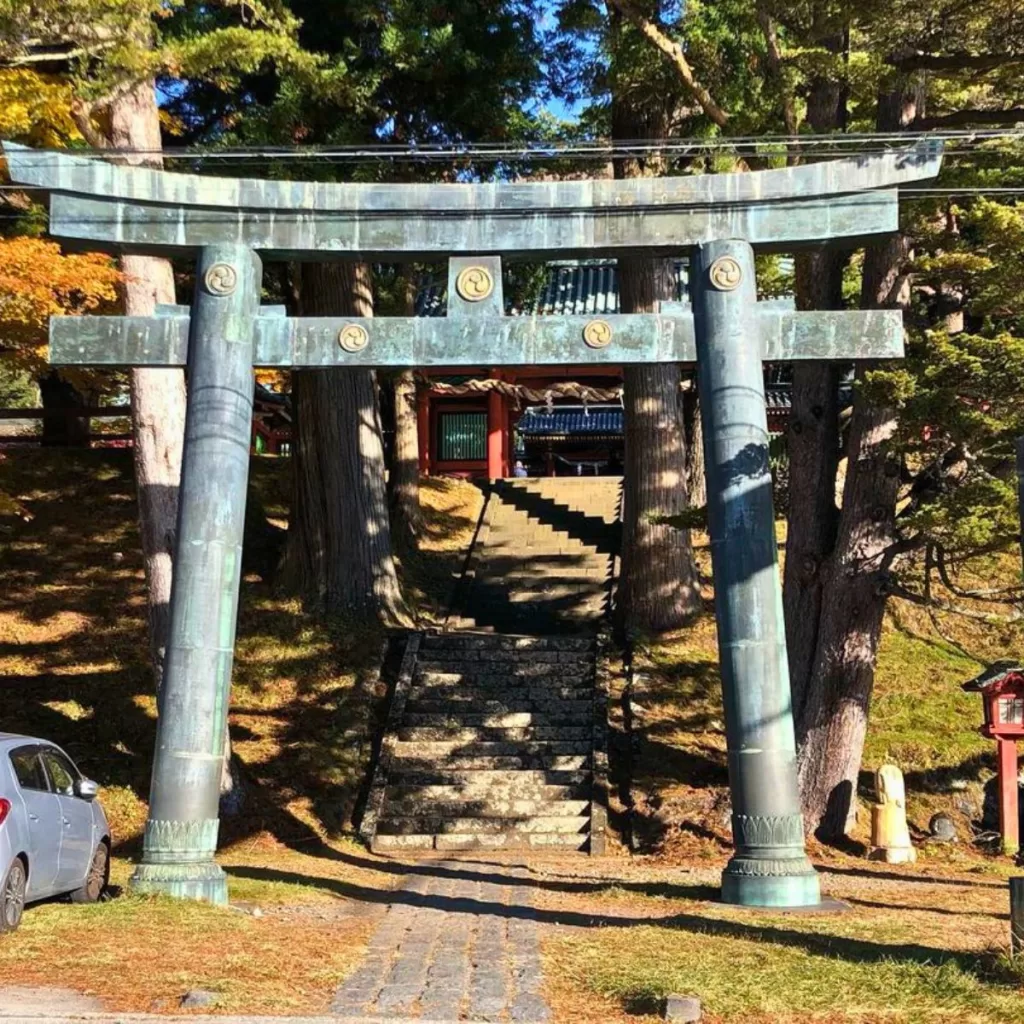Futarasan Shrine: A Sacred Forest Sanctuary in Nikko
Understanding the History of Futarasan Shrine
The illustrious Futarasan Shrine, Nikko Futarasan Jinja, holds deep historical and cultural significance for Japan. Founded in 782 by Shodo Shonin, a revered Buddhist monk who introduced Buddhism to Nikko and who also founded nearby Rinnoji temple, this shrine is dedicated to the deities of Mount Nantai, Mount Nyoho, and Mount Taro — the three sacred mountains of Nikko.

This shrine is an essential part of the UNESCO World Heritage Site known as the “Shrines and Temples of Nikko,” including the Futarasan Shrine, the Toshogu Shrine, and the Rinnoji Temple. The history of this shrine is closely linked to these historic creations as they all mark crucial milestones in Japan’s cultural evolution while simultaneously showcasing the blend between Shintoism and Buddhism.
Location and Surrounding Attractions
Futarasan Shrine is located centrally in Tochigi Prefecture near JR Nikko Station. The shrine lies at the heart of Nikko’s richly historic area and is also home to other significant attractions such as Tobu Nikko, Rinnoji Temple, and Toshogu Shrine. In addition, one stands at the summit of Mount Nantai, while another is on the northern shore of Lake Chuzenji at the mountain’s base, providing stunning views over Tochigi.
One of Japan’s most beautiful bridges, the sacred Shinkyo Bridge, also belongs to Futarasan Shrine. It is believed that Shodo Shonin crossed over the Daiya River on this very bridge. Today, it serves as a symbolic gateway into central Nikko.
The Architectural Splendor and Structures of Futarasan Shrine
The main grounds comprise several buildings, including haiden (worship hall), honden (main hall), and various auxiliary buildings that testify to classic Japanese elegance. The main shrine complex consists of two parts: an upper area around which the most important cultural properties are located, including elegant copper lanterns gifted by feudal lords, and a lower area with smaller buildings.

The entrance to Futarasan Shrine is free, but certain areas within might require an entry fee, such as access across the Shinkyo Bridge.
Remarkably designed considering aesthetic appeal and symbolism, Japanese authorities have designated many of these structures as Important Cultural Properties.
Spiritual Importance
Futarasan Shrine plays a prominent role in spiritual customs for locals who visit regularly from Utsunomiya city in Tochigi prefecture or even further distances. Known as one of Japan’s oldest shrines, it signifies purification – visitors can use water from three different sacred fountains to cleanse themselves spiritually before entering Toshogu or any other shrine or temple.
Among deity worshippers, especially those paying homage to deities associated with good marriage prospects or safe childbirth, often frequent this place, making offerings and prayers in front of the main Futurasan Jinja shrine, also called the Mausoleum, which holds important cultural properties adding depth to its spiritual gravitas.
Festivals at Futarasan Shrine
There exist plenty of activities drawing crowds throughout the year. Still, during annual festivals, particularly the Yayoi Festival held every April, interactions with the local community reach peak levels, adding vibrancy around the whole complex. Spectacular processions involving portable shrines, Samurai costume parades, and classical music are all part of celebrations, making these events a see during any Nikko travel agenda.
Futarasan Shrine offers unforgettable insights into a rich tapestry, Japanese religious practices, architecture, community life, soulful space, reflection, and prayer. It continues to enchant tourists and residents, ensuring its heritage moves toward future generations.